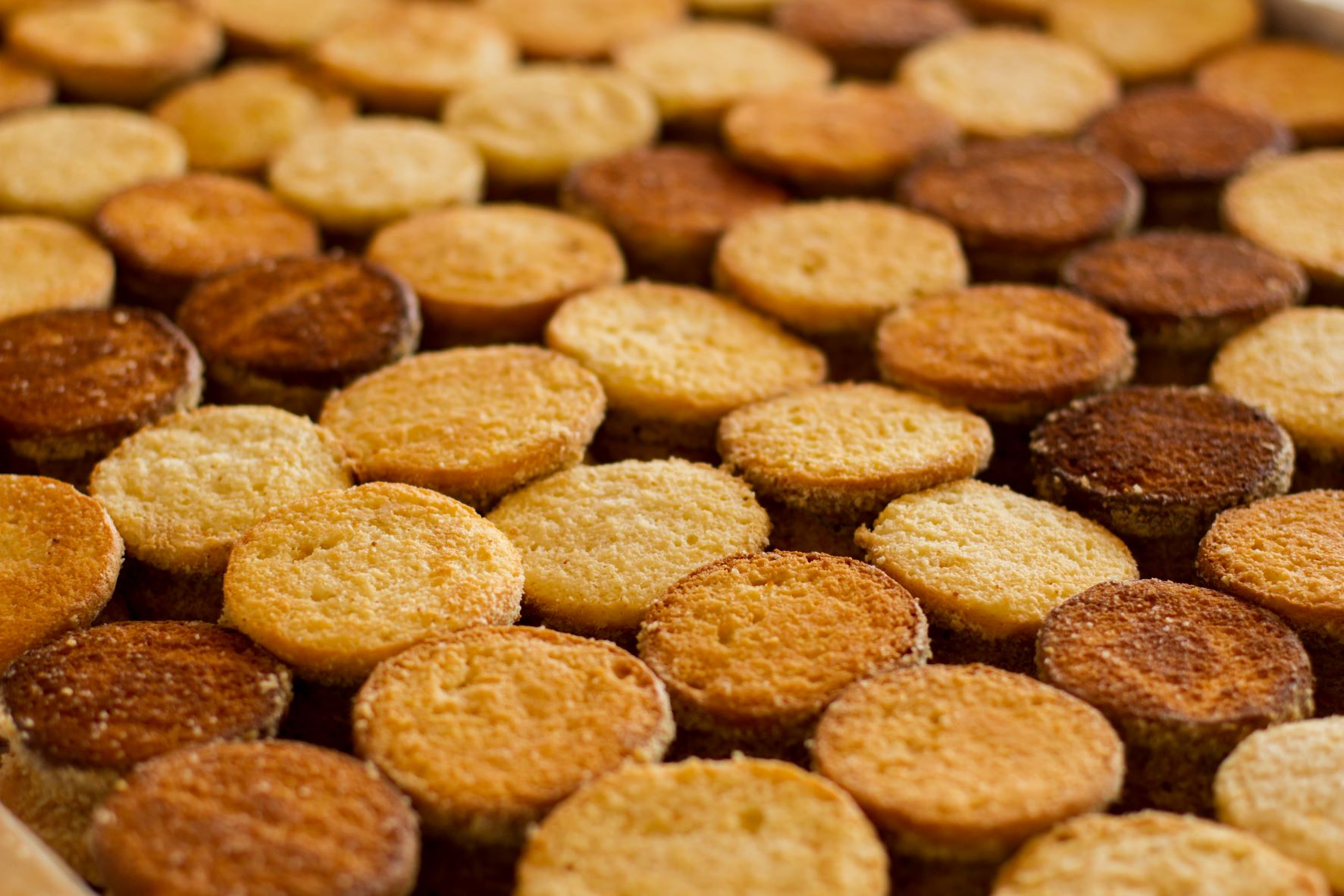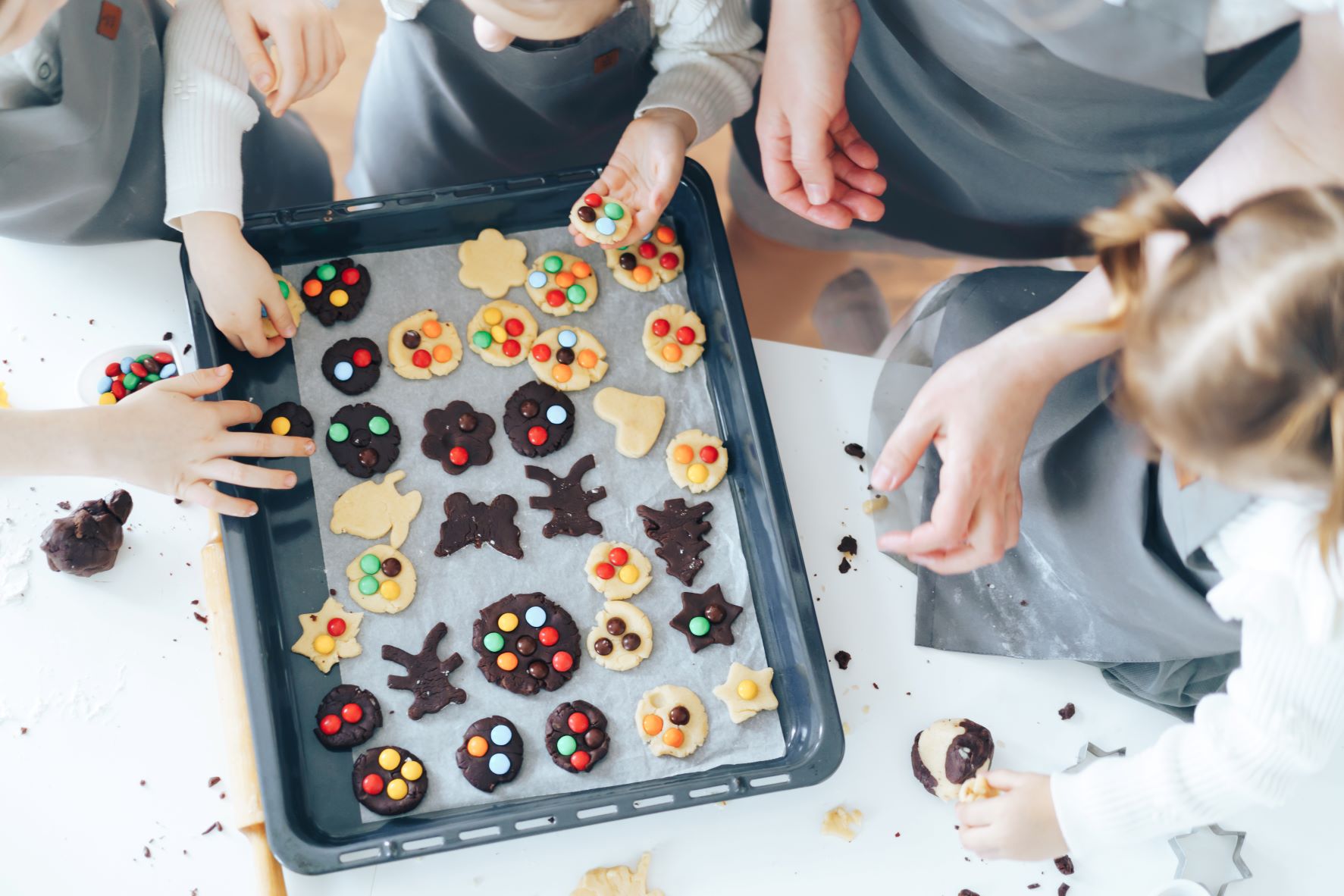How to Make Good Cookies
There are a few things that can make a great cookie. It is important to cream butter and sugar at room temperatures. Next, slowly stir in the eggs. Finally, bake them on the center rack.
Butter and shortening are the best ingredients
Shortening and butter are the preferred ingredients in many cookie recipes. These two fats are well-known for adding texture and flavor in baked goods. However, when making cookies, there are certain things to keep in mind.
First, butter has a lower melting point than shortening. Butter melts at about 90 to 95 F while shortening melts around 95 F. Because of this, cookies made with butter will spread more than those made with shortening. If you want a more consistent, thinner spread, refrigerate the butter before baking.
Second, butter’s high water content can increase the formation of gluten. Shortening does not create steam during baking, which helps reduce the production of gluten. Gluten can make cookies chewy by forming.
Finally, shortening has a longer shelf life than butter. Cookies containing shortening can be stored in the refrigerator. They can even be frozen! This helps them retain their shape better.
Butter has a rich, buttery taste, which is unlike shortening. It also adds moisture as well as fat to your cookies. And when you use it in baking, you’ll get a crisper, more delicious results.
Butter is a healthier alternative to shortening. It is free of trans fats and rich in essential nutrients. It also has a rich, creamy flavor that is unique.
Some people find that shortening makes their baked goods more tender and taller. This is because shortening contains 100 percent fat, and does not contain any water. As a result, the melting point of shortening is higher. This means that you can bake your cookies for longer periods of time.
When deciding between butter and shortening, consider the amount of moisture your recipe requires. You will get softer, butterier cookies with shortening, but not the same buttery flavor.

Creaming butter and sugar at room temperature
In most baking recipes, creaming butter and sugar is a critical step. Adding these ingredients together properly will result in fluffy, light cookies. It can make the difference between a chewy cookie or a cakey cookie. But it can also lead to a sticky, greasy baked good if done improperly. Here are some tips to help make it easy.
Butter has special properties. Butter can melt and become very soft and gummy when melted. This can make it difficult to incorporate air. Cream it with room temperature butter. A thermometer can help you determine this.
For best results, beat the ingredients until they are light and fluffy. Using a mixer can help you achieve this. It will take a few minutes. You can also use a wooden spoon with a fork, if you don’t have a mixer. Make sure the butter is not melted by the fork. The holes will give your mixture an extra lift.
Creaming is important for many baking recipes, including cake. Using the right creaming technique can prevent some common cake problems.
Butter and sugar cannot be chilled, unlike eggs. They must be at room temperatures before you can cream them. Melted butter can make the emulsion more liquid, resulting in a puddle and not fluffy batter.
You can make tiny air pockets by adding sugar crystals to a butter mixture. This will allow the batter to rise. You don’t want the ingredients to be too mixed. You will end up with a messy mess.
The best way to cream butter is with an electric mixer. You can also cream butter and sugar by hand.
Chilling the dough
If you want to make good cookies, you need to know how to chill the dough. A flat, crumbly cookie can be the result. Also, chilling will allow your flavors to develop more fully.
You may also notice that your cookies will brown better. This is due to the sugar in the flour being broken down into carbohydrates. Sugar is a flavor enhancer and gives your cookies that golden hue.
The dough can be chilled in the refrigerator for up to an hour or overnight. To prevent the dough from sticking to your counters, it is important to let it cool down.
One of the best features about chilled dough, is its ability create more attractive and chewy cookies. As the fat in the dough cools, it will become firmer and spread less. The result is a cookie with more flavor and crisp edges.
The dough can be chilled to achieve a uniform texture. The dough can also be chilled to prevent it from expanding during baking.
While cold butter may not be ideal for creaming it can make the best cookies. Soften the butter for 10 minutes before proceeding with your recipe.
In addition to the above mentioned, the best way to chill the dough is to freeze it. After you have made the dough, place it on the counter to chill for at least 20 mins. Once the dough is firm enough to handle, it is time for it to be refrigerated for at least 24 hours.
You can also allow the dough to chill for up 72 hours. Be sure to check for unusual ingredients and steps.
Adding eggs slowly
When you want to make good cookies, you need to add eggs slowly. The key to mixing eggs into cookie dough is to create a uniform suspension of the liquid in the fat. If you add them too quickly, you’ll end up with lumpy batter.
There are two types of eggs. Egg whites are high in protein. They are often used in meringues and marshmallows. Egg yolks, however, are mostly fat. They are rich in lecithin and are able to coagulate.
They can be used in baking as well as being added to food to create an emulsion. Eggs have an emulsifier, which stabilizes the emulsion. You can also add vinegar or oil to an emulsion.
Some recipes call for just egg whites, while others require both yolks and whites. This can lead to cookie dough with different textures. For example, if you prefer chewy cookies, you should increase the number of eggs. However, if you prefer crunchy cookies, you can reduce the number of eggs.
It’s a good idea for you to monitor your oven temperature when baking. If it’s too low, you could end up with underbaked or overbaked centers. You might end up with lopsided cookies.
It’s also important to mix your ingredients at a lower temperature. Although butter and sugar might curdle at first, you can continue beating them until they become smooth. Once the batter has been incorporated, you can add eggs.
Cold eggs can be used if you have a stand mixer. However, if you’re working in a large bowl, you should place the bowl inside a damp towel. You can stabilize the bowl by placing it inside a damp towel to prevent it from cracking.
Baking on the center rack
While many recipes don’t specify the rack position, it is an important factor in baking perfect cookies. Cookies will bake evenly if the oven rack is correctly placed.
There are several types of racks. These include middle, bottom, and top. Each type can provide different levels in heat and air circulation.
If you are baking cookies in a busy kitchen, you should consider rotating your oven from time to time to avoid hot spots. If you don’t, your cookies won’t cook evenly and could burn before it is finished.
No matter what rack you use for baking, rotate the cookies halfway through baking. This will prevent them from scorching and ensure even browning. To allow for air circulation, you might also leave a space between your cookies.
For baking one sheet of cookies, the middle oven rack is ideal. It allows for the most even heating and cooking. Bake cakes, casseroles and other dishes that require even temperatures.
The bottom rack is also useful when you are cooking foods that need more direct heat on the bottom. This is a great position for breads, cakes, pies, and other baked goods. You may need to bake them a little longer to achieve the perfect color.
A double-layer “Airbake”, pan with two layers will insulate your cookie’s bottom. Another good tip is to bake on a cooled sheet tray. This will not only prevent butter from getting puddled onto your sheet, but it will also firm up your cookies so they are easy to remove.
Make sure to know the time it takes to chill your dough before you start baking. Also, watch out for unusual ingredients and equipment.


